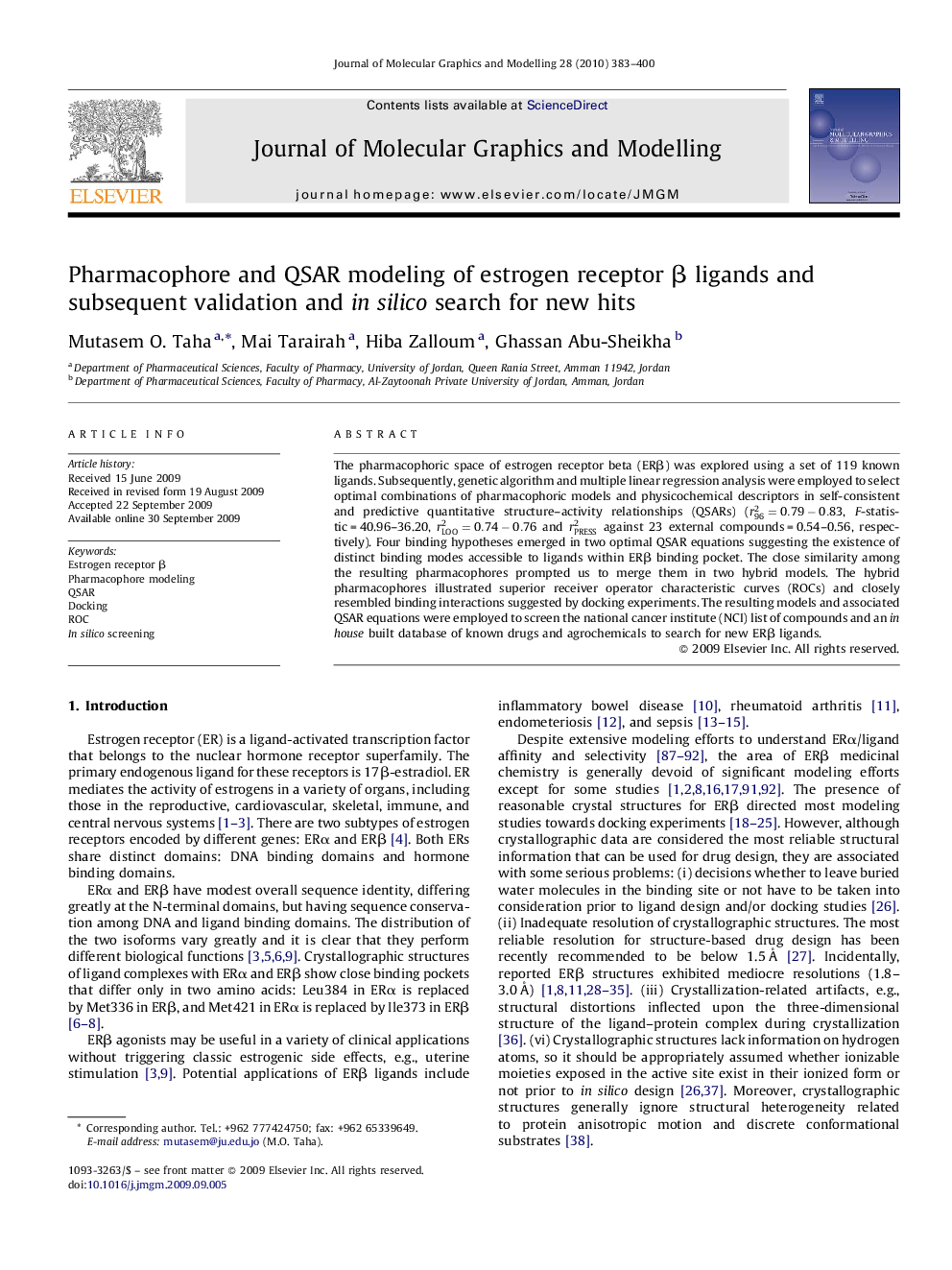| Article ID | Journal | Published Year | Pages | File Type |
|---|---|---|---|---|
| 443611 | Journal of Molecular Graphics and Modelling | 2010 | 18 Pages |
The pharmacophoric space of estrogen receptor beta (ERβ) was explored using a set of 119 known ligands. Subsequently, genetic algorithm and multiple linear regression analysis were employed to select optimal combinations of pharmacophoric models and physicochemical descriptors in self-consistent and predictive quantitative structure–activity relationships (QSARs) (r962=0.79−0.83, F-statistic = 40.96–36.20, rLOO2=0.74−0.76 and rPRESS2 against 23 external compounds = 0.54–0.56, respectively). Four binding hypotheses emerged in two optimal QSAR equations suggesting the existence of distinct binding modes accessible to ligands within ERβ binding pocket. The close similarity among the resulting pharmacophores prompted us to merge them in two hybrid models. The hybrid pharmacophores illustrated superior receiver operator characteristic curves (ROCs) and closely resembled binding interactions suggested by docking experiments. The resulting models and associated QSAR equations were employed to screen the national cancer institute (NCI) list of compounds and an in house built database of known drugs and agrochemicals to search for new ERβ ligands.
